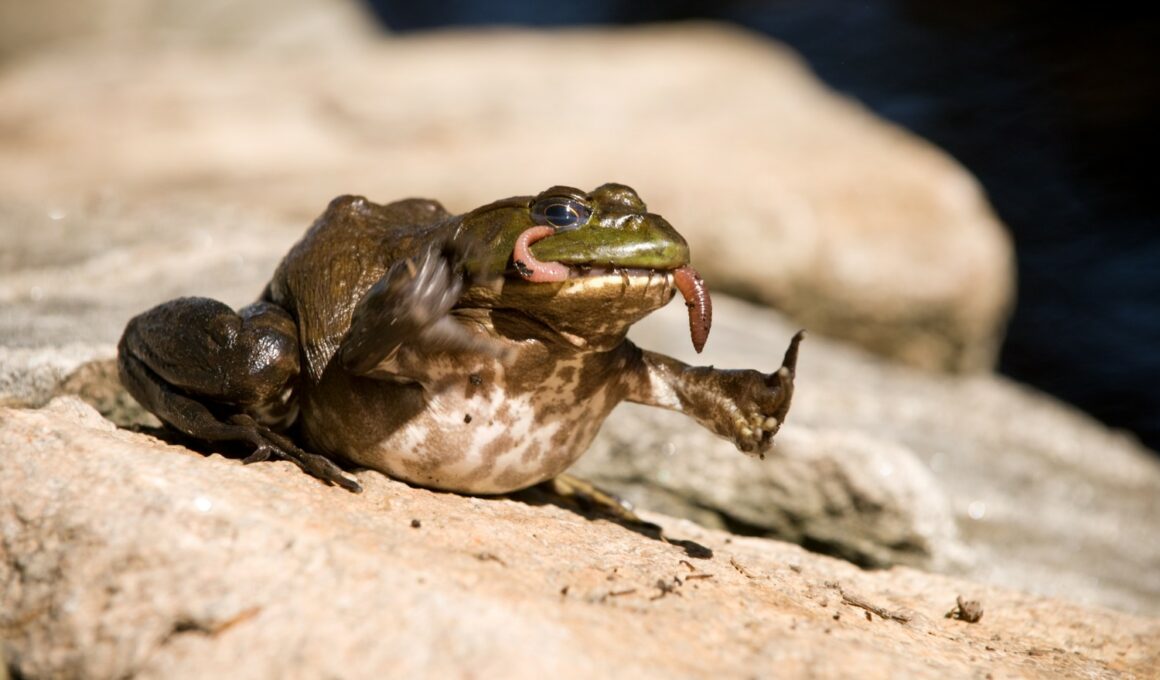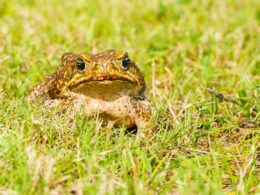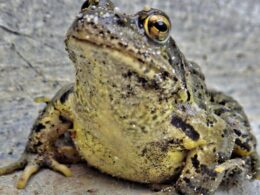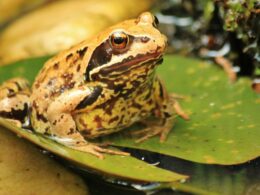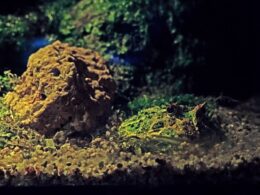In this article Show
Ah, Pacman frogs. Their distinct appearance and vibrant colors have caught the eyes of many reptile enthusiasts, including yours truly. These little amphibians, with their wide mouths reminiscent of the classic video game character, have specific dietary needs that often raise questions among pet owners.
One common query? Whether superworms make a good meal for these frogs. Given my penchant for exploring the world of reptiles in my free time, I’ve garnered some insights on this topic.
In this article, we’ll discuss if superworms are a nutritious and suitable choice for Pacman frogs, weighing the pros and cons based on factual evidence. Whether you’re a first-time frog owner or a seasoned reptile lover looking to expand your knowledge, this guide is tailored for you.
Quick Answer
Yes, superworms are suitable for Pacman frogs when offered as part of a varied diet. They provide essential proteins, stimulate hunting instincts with their activity level, and their chitinous exoskeleton aids in digestion. However, it’s crucial to choose the appropriate size, avoid overfeeding due to their fat content, and ensure they are safely incapacitated before offering to the frog. For optimal health, combine superworms with other food sources like crickets, roaches, and nightcrawlers.
What are Superworms?
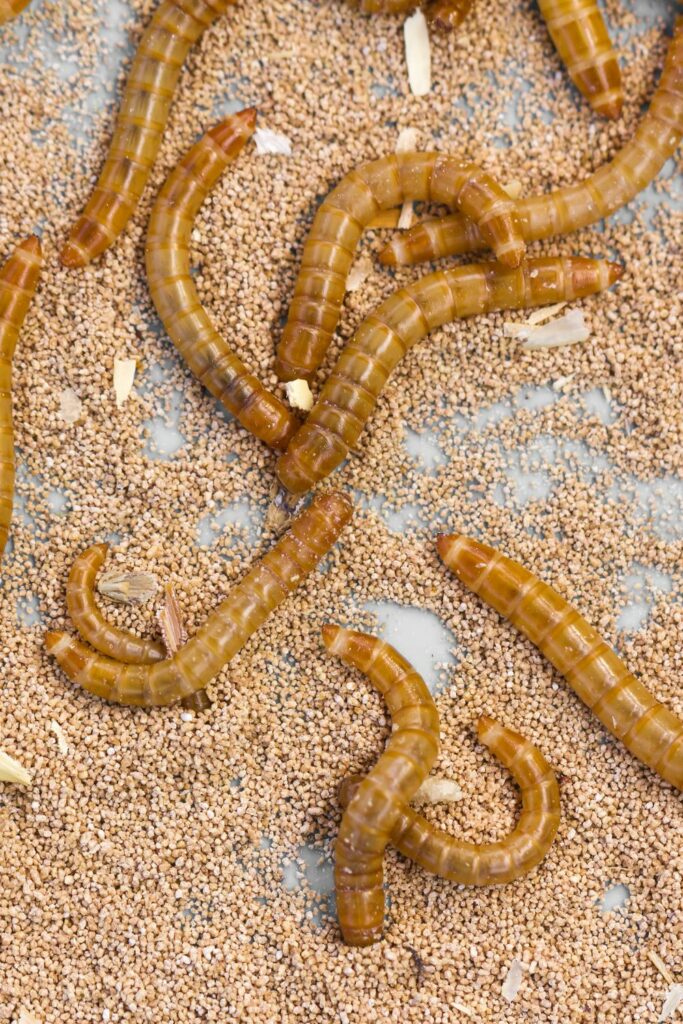
Superworms, scientifically known as Zophobas morio, are not worms at all – they’re larvae! These intriguing creatures are the larvae of the darkling beetle, and their larger size makes them easily distinguishable from mealworms, which are the larvae of different beetle species.
Biology & Lifecycle
The superworm’s lifecycle starts as a tiny egg, which hatches into a larva. This larva, the superworm we’re familiar with, goes through several instar stages, molting and growing larger with each one.
Given the right conditions, these larvae will eventually pupate, forming a protective cocoon around themselves. After a certain period, out emerges a darkling beetle, ready to mate and lay eggs, starting the cycle anew.
Common Uses
These larvae have grown in popularity, especially in the pet industry. Given their active wriggling movement, they serve as an enticing treat for various reptiles, birds, and even some fish. Moreover, they’re also being researched for their potential in waste bioconversion, turning organic waste into valuable biomass.
Nutritional Profile
Superworms are quite a nutritious snack, but like any food, they should be offered in moderation. Here’s a brief rundown of their nutritional content:
- Protein: Essential for growth and tissue repair, superworms contain around 17-20% protein.
- Fat: They have a higher fat content, about 14-20%. This makes them an energy-rich food but also means they can contribute to weight gain if overfed.
- Vitamins: Superworms are a source of several vitamins, including some B vitamins like riboflavin and niacin.
- Minerals: They provide essential minerals like calcium, though their calcium-to-phosphorus ratio is not ideal for some pets. This is why many pet owners choose to dust superworms with a calcium supplement before feeding.
In conclusion, superworms are more than just wriggly larvae; they’re a powerhouse of nutrition with diverse uses in the pet and sustainability sectors. However, when it comes to feeding them to Pacman frogs or any pet, it’s essential to be aware of their nutritional profile to ensure a balanced diet.
Benefits of Feeding Superworms to Pacman Frogs
Pacman frogs, with their insatiable appetite, are always on the lookout for a tasty treat. Enter superworms, a food source that brings several benefits to the table, making them a viable option for our amphibian friends.
High Protein Content
Proteins play a pivotal role in the health and well-being of Pacman frogs. Essential for growth, especially in younger frogs, proteins help in building and repairing tissues. With superworms offering around 17-20% protein, they can be a fantastic source to ensure your frog gets its required dose of this macronutrient.
Chitinous Exoskeleton
The hard outer shell of superworms, made of chitin, serves a dual purpose. First, it aids in the digestion process. As the frog digests the exoskeleton, it acts as roughage, promoting gut health. Secondly, this chitinous layer provides an essential source of fiber, ensuring that your frog’s digestive system runs smoothly.
Activity Level
Superworms are quite the wrigglers! Their active nature can stimulate the hunting instincts of Pacman frogs. This not only provides mental stimulation for the frog but also ensures they get a bit of exercise, chasing down their wriggly prey.
Availability and Ease of Storage
One of the more practical benefits of super worms is how accessible they are. Most pet stores, especially those catering to reptile and amphibian owners, stock superworms.
What’s more, storing them is a breeze. Unlike some other live foods that require specific conditions, superworms are relatively low-maintenance.
Keeping them in a container with some oat or wheat bran as bedding, and occasionally offering some vegetable slices for moisture, will keep them happy and healthy.
To sum it up, superworms aren’t just a snack for Pacman frogs; they’re a beneficial addition to their diet. Their nutritional profile, combined with the ease of storage and the entertainment they provide, makes them a worthy consideration for any Pacman frog owner.
Concerns and Drawbacks

While superworms offer a buffet of benefits for Pacman frogs, it’s crucial to understand that they’re not without their drawbacks. Here are some concerns to keep in mind when considering super worms as part of your frog’s diet:
Potential for Overfeeding
Superworms are rich in fats, containing about 14-20% fat. While fats are essential for energy, overfeeding these larvae can quickly lead to obesity in Pacman frogs. Obesity is not just about aesthetics; it can lead to several health issues, including reduced mobility and increased susceptibility to diseases.
Choking Hazards
Given their size and tough exoskeleton, superworms can pose a choking risk, especially if they’re too large for the frog. The hard exoskeleton can sometimes become lodged in the frog’s throat, leading to distress or even serious injury.
Nutritional Imbalances
Superworms are nutritious, but they shouldn’t be the only item on the menu. Relying solely on superworms can result in nutritional imbalances. For instance, their calcium-to-phosphorus ratio isn’t ideal for amphibians. Pacman frogs require a varied diet to ensure they receive all the necessary nutrients in the right proportions.
Potential Harm to the Frog
It might sound surprising, but superworms have jaws that can bite. If not properly incapacitated before being offered, a superworm can potentially bite and harm the inside of a frog’s mouth or digestive tract. This is especially a concern if larger superworms are fed to smaller frogs.
In the end, like with most things in life, moderation and care are key. Superworms can be a fantastic addition to a Pacman frog’s diet, but being aware of these concerns ensures that they remain a treat and not a threat.
Best Practices for Feeding Superworms to Pacman Frogs
Feeding your Pacman frog superworms can be an enriching experience for both you and your amphibious friend. But to ensure it’s a safe and healthy venture, certain best practices are essential. Here’s a guide to feeding super worms in the most beneficial way:
Appropriate Sizing
Size matters, especially when it comes to feeding. Choose superworms that are appropriate for your frog’s size. A good rule of thumb is to select worms that are no wider than the space between your frog’s eyes. This minimizes the risk of choking and ensures easy digestion.
Frequency of Feeding
Variety is the spice of life, and the same goes for your Pacman frog’s diet. Superworms should be a part of a diverse menu, not the whole of it. Depending on the frog’s age and size, you might offer superworms once or twice a week, interspersed with other food items like crickets, roaches, or earthworms.
Preparing the Superworms
Safety first! Before offering superworms to your frog, it’s wise to incapacitate them. This can be done by placing them in a refrigerator for a short period, which makes them sluggish, or by gently pinching their heads. This step ensures they won’t bite or harm your frog from the inside.
Supplements and Gut-loading
Enhance the nutritional value of superworms by embracing the concept of gut-loading. Feed them a nutritious diet of veggies and grains 24-48 hours before offering them to your frog. This not only boosts their vitamin and mineral content but also ensures your frog gets a more nutritious meal.
Furthermore, dusting the superworms with a calcium or multivitamin supplement, especially if they form a significant part of the frog’s diet, can balance out any nutritional imbalances.
By following these practices, you can ensure that feeding super worms to your Pacman frog is not only a joyous experience but also a nutritionally enriching one. Here’s to happy, healthy frogs!
Alternative Foods for Pacman Frogs
Superworms are just one of the many delicacies that Pacman frogs can enjoy. Given their voracious appetite, it’s no surprise that these frogs can consume various prey items. Diversifying their diet not only meets their nutritional needs but also keeps them mentally stimulated. Here’s a quick overview of some other suitable foods:
Crickets
A staple in many amphibian diets, crickets are readily available and rich in protein. They’re agile, ensuring that your frog’s hunting instincts are well-engaged. However, like superworms, they should be gut-loaded and occasionally dusted with supplements to enhance their nutritional value.
Roaches
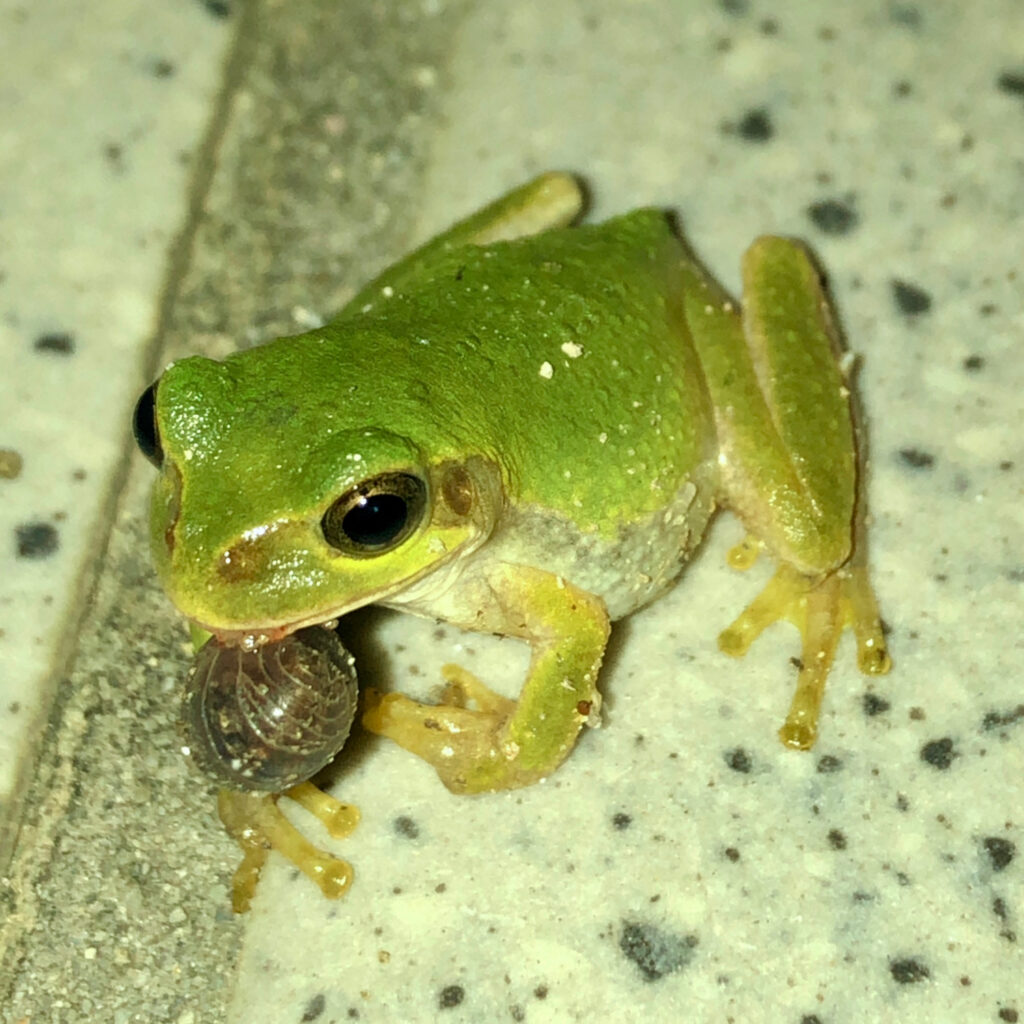
Yes, you read that right! Dubia roaches, in particular, are an excellent food source for Pacman frogs. They are packed with protein and have a softer exoskeleton compared to superworms, making them easier to digest. They’re also less likely to cause impaction.
Nightcrawlers
These are large earthworms that can be a juicy treat for your Pacman frog. They are low in fat, high in protein, and are a natural part of many amphibians’ diets in the wild.
Pinky Mice
For larger, adult Pacman frogs, an occasional pinky mouse can be offered. However, it’s essential to note that these should be given sparingly due to their high fat content.
Silkworms, Hornworms, and Waxworms
These are other worm varieties that can be introduced into the diet. Each comes with its own set of nutritional benefits, with waxworms being fattier and best offered as a treat.
The Importance of a Varied Diet
Just as we humans thrive on a balanced and varied diet, so do Pacman frogs. A diverse diet ensures that they receive all the essential nutrients in the right proportions.
It minimizes the risks of nutritional deficiencies and related health issues. Moreover, different prey items engage the frog in various ways, catering to their natural hunting instincts and keeping them mentally alert.
In conclusion, while superworms are a fantastic food choice, they’re just one of the many options available for Pacman frogs. By rotating between different foods, you ensure your frog leads a healthy, happy, and enriched life.





